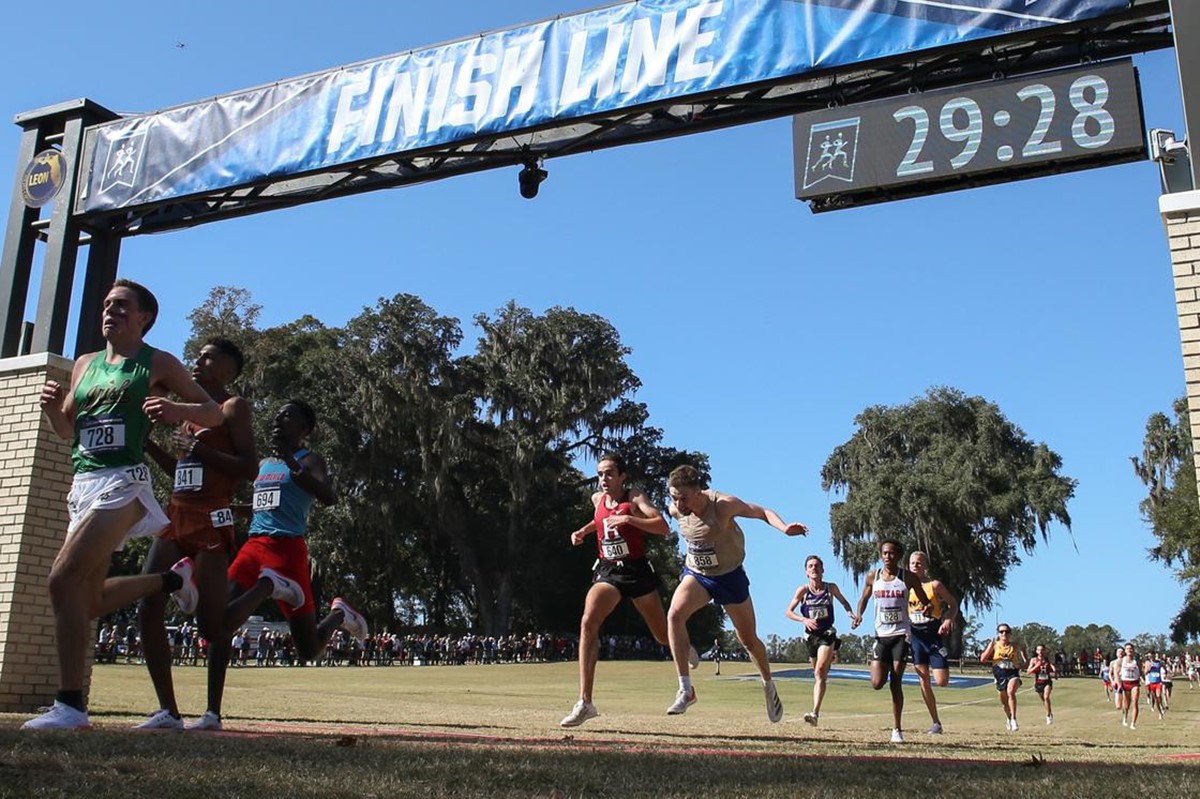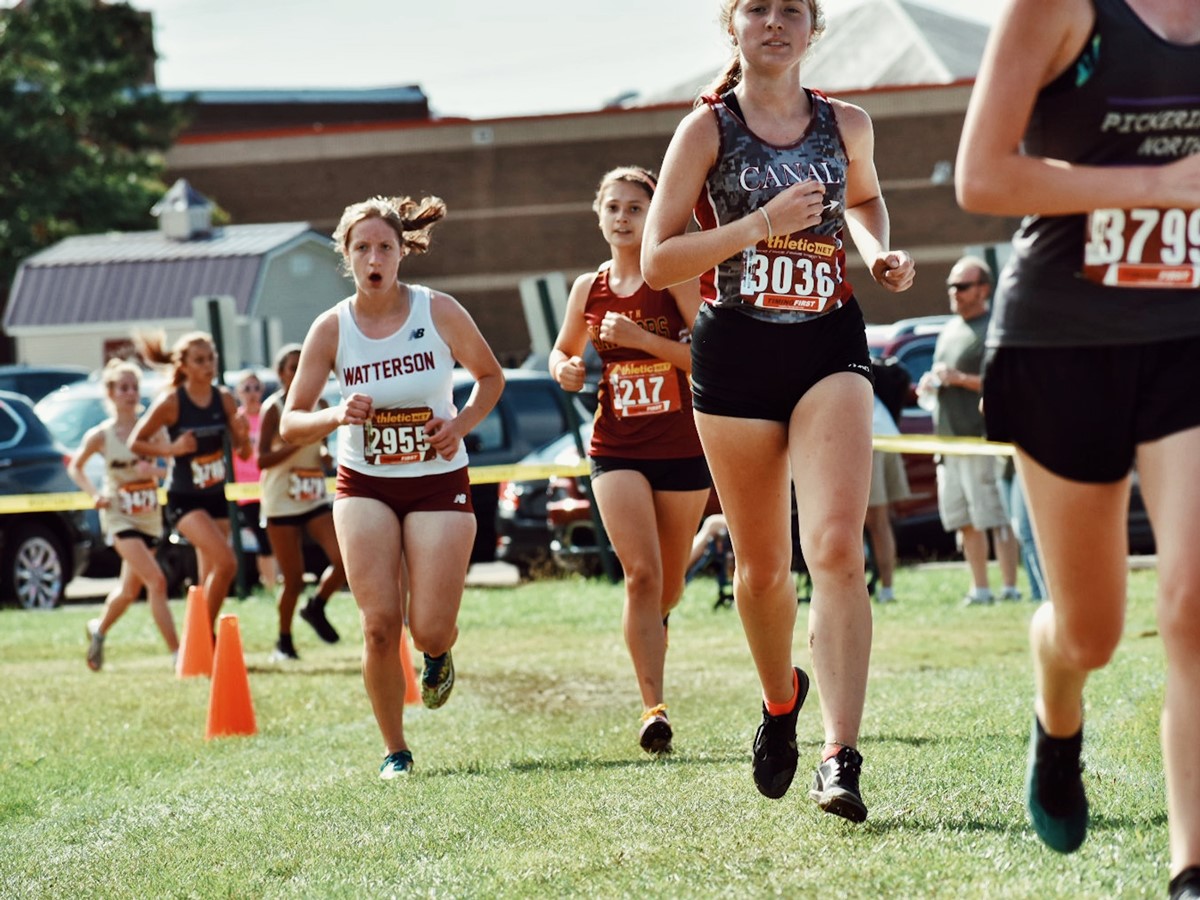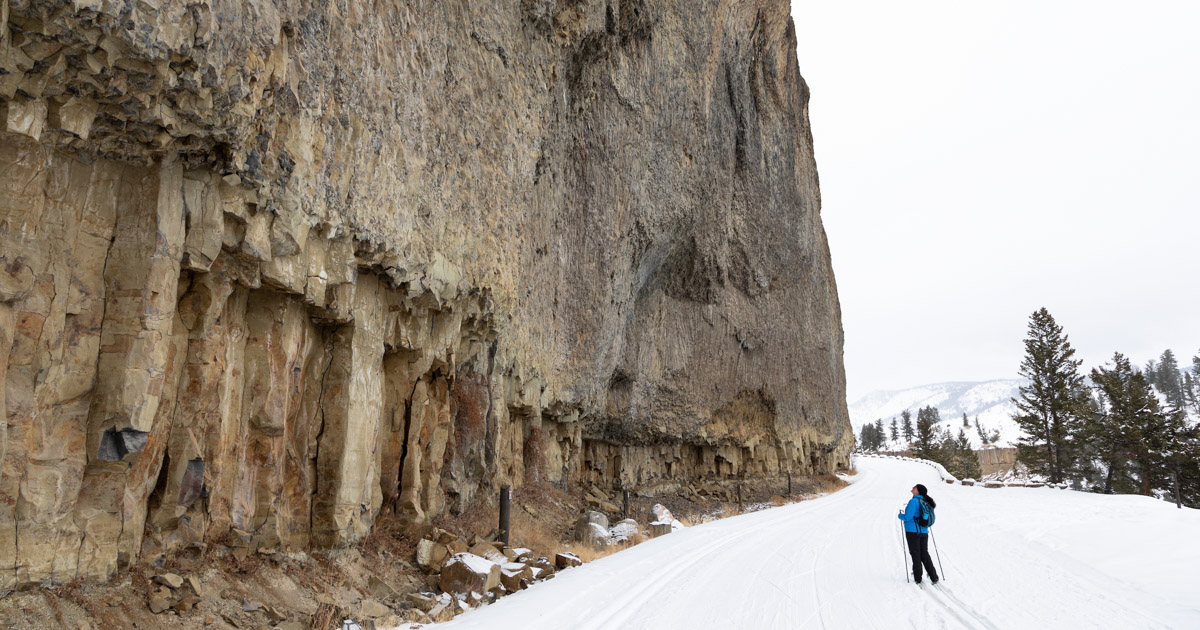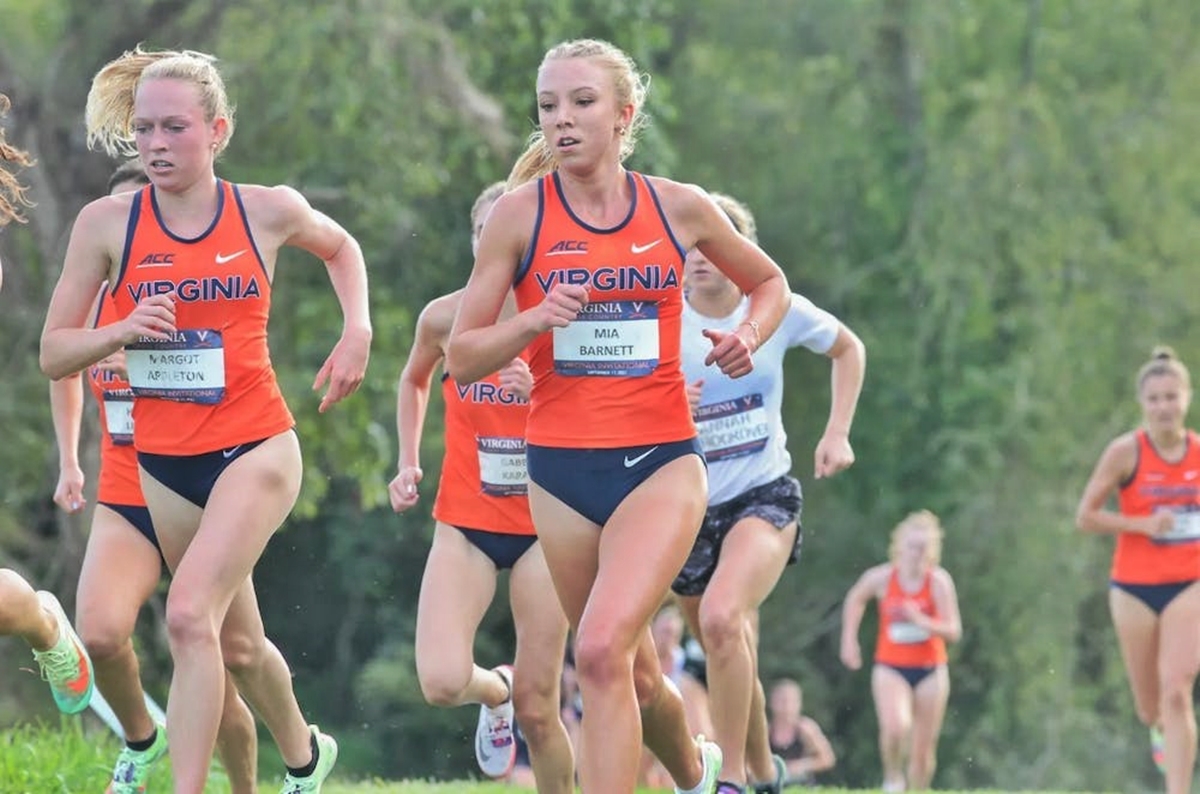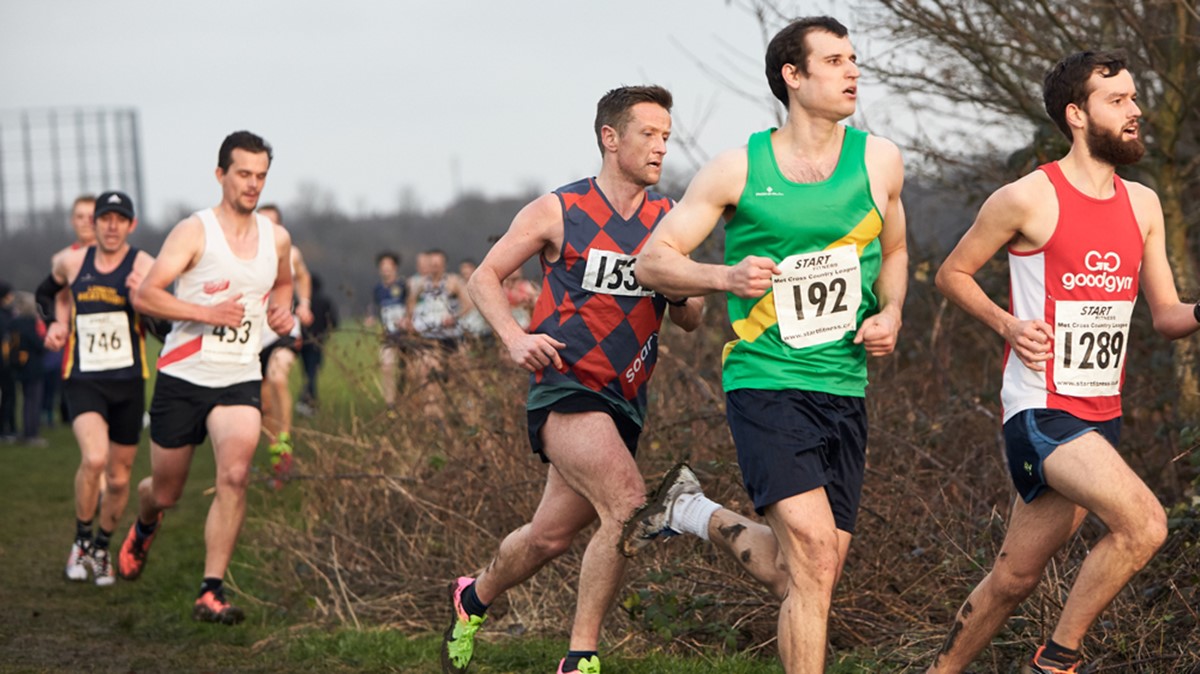

Featured
How Does Cross Country Work
Modified: August 21, 2023
Discover how cross country works and get featured in this popular running sport. Learn about the rules, training, and competitions
Introduction
Cross country running is a highly engaging and challenging athletic sport that involves racing over natural terrain. It is a sport that requires a unique combination of speed, endurance, and mental toughness. Athletes push themselves to the limits as they navigate through varying terrains, including hills, trails, and grassy fields. In this article, we will explore the fascinating world of cross country running, including its history, rules, training methods, and the benefits it offers.
Originating from the ancient sport of hunting, cross country running has evolved into a competitive sport enjoyed by athletes of all ages and abilities. The earliest records of cross country races trace back to the 19th century, when they were organized as a means for military personnel to stay fit. Over time, the sport gained popularity and eventually became an official event in the Olympic Games.
Unlike other track and field events, cross country races are not held on a track but on natural terrain, such as parks, forests, and open fields. The distance covered in a cross country race can vary, typically ranging from 5 kilometers to 12 kilometers for high school and college competitions. Elite-level races can extend up to 10 kilometers for women and 12 kilometers for men.
One of the unique aspects of cross country is its team element. While individual performances are important, cross country races are scored based on team finishes. The team with the lowest cumulative score, determined by adding the positions of each team member, wins the race. This adds an extra level of camaraderie and teamwork to the sport.
In the following sections, we will delve deeper into the history of cross country, the rules and regulations, the equipment and gear used, the training methods employed by athletes, the courses on which races are held, the scoring system, and the strategies and tactics used by cross country runners. Furthermore, we will explore the significant physical and mental benefits that cross country running offers to athletes.
History of Cross Country
The history of cross country can be traced back to the early 19th century in England, where it emerged as a sport that combined endurance and agility. It was initially practiced as a means of training for military personnel. Organized cross country races began in the mid-19th century with the goal of promoting physical fitness and encouraging competitive spirit among athletes.
The first recorded cross country race took place in 1837 at Charterhouse School in Surrey, England. The race covered a distance of 3.7 miles (approximately 6 kilometers) and included obstacles such as fences and ditches. This marked the beginning of a new era for the sport.
During the 1800s, cross country races gained popularity among schools and universities in England, serving as a way to challenge and test the athletic abilities of students. In 1867, the first National Cross Country Championships were held in England, becoming an annual event that attracted participants from various regions.
As cross country running spread across Europe and North America, the sport gained recognition and underwent further advancements. In 1903, the International Cross Country Championships, which later became the IAAF World Cross Country Championships, were established. This event showcased the best athletes from around the world and promoted international competition in cross country.
Cross country also found its place in the Olympic Games. The sport made its Olympic debut at the 1912 Stockholm Games, where it was dominated by Finnish athletes. Since then, cross country has been featured in several Olympic Games, with various distances and formats introduced over the years.
Throughout its history, cross country running has evolved in terms of course design, athletic techniques, and the inclusion of women’s races. Today, the sport is enjoyed worldwide, with national and international championships held annually, and thousands of athletes competing at both recreational and elite levels.
Cross country has not only played a significant role in the development of competitive running but has also influenced other sports. It has inspired the creation of marathons and trail running events, contributing to the growth of long-distance running worldwide.
As the sport continues to evolve, cross country running remains a challenging and exhilarating pursuit that showcases the raw athleticism and determination of its participants.
Rules and Regulations
Like any sport, cross country running has a set of rules and regulations that govern competition and ensure fairness. These rules are established by governing bodies such as the International Association of Athletics Federations (IAAF) and national athletic associations. Understanding and adhering to these rules is essential for both athletes and race organizers.
The primary objective of cross country races is to cover a designated distance in the shortest possible time. Here are some key rules and regulations that govern cross country running:
- Course Marking: Cross country courses must be well-marked, indicating the route that athletes must follow. This typically involves flags, cones, and arrows, ensuring that competitors do not take shortcuts or deviate from the designated path.
- Starting Procedure: Races begin with a starting line and may utilize starting blocks for sprint-style events. Athletes must be fully behind the starting line at the commencement of the race. False starts may result in disqualification.
- Course Terrain: Cross country races take place on varied terrain, including trails, grass, sand, and gravel. The terrain may include natural obstacles such as hills and uneven surfaces, which athletes must navigate during the race.
- Distance and Course Length: The distance of a cross country race varies depending on the level of competition. High school races are typically around 5 kilometers, while college races can range from 5 to 10 kilometers. Elite-level races for both men and women often cover distances up to 10 to 12 kilometers.
- Team Scoring: Cross country races are scored based on both individual and team performances. The team with the lowest cumulative score wins the race. Team scores are calculated by adding the finishing positions of the top scorers from each team.
- Penalties: Athletes may be penalized for breaking rules, such as cutting the course, interfering with other runners, or using unauthorized aids. Penalties can range from time penalties to disqualification, depending on the severity of the infraction.
- Timing: Races are timed using various methods, including manual timing and electronic timing systems. Each athlete is assigned a unique timing chip or bib number to accurately record their finishing time.
It is important for athletes to familiarize themselves with the specific rules and regulations of each race they participate in. This includes understanding the course layout, knowing the start and finish procedures, and being aware of any penalties or disqualification criteria.
By following the rules and regulations of cross country running, athletes can compete fairly and ensure a safe and enjoyable race experience for themselves and their fellow competitors.
Equipment and Gear
Participating in cross country running requires minimal equipment and gear, but choosing the right items can greatly enhance performance, comfort, and safety. Here are some essential equipment and gear considerations for cross country runners:
- Running Shoes: Good-quality running shoes are crucial for cross country runners. They should provide adequate cushioning, support, and traction to handle varying terrains. Trail running shoes are often recommended due to their enhanced grip and durability.
- Apparel: Lightweight, moisture-wicking, and breathable clothing is ideal for cross country running. This helps to keep the body cool, dry, and comfortable throughout the race. It is important to consider the weather conditions when selecting appropriate attire, such as layering for cooler temperatures.
- Socks: Choosing the right socks can prevent blisters and provide additional comfort. Look for moisture-wicking socks with cushioned soles that offer a snug fit to minimize friction.
- Compression Gear: Some athletes opt for compression gear, such as compression shorts or socks, to improve circulation and reduce muscle soreness. Compression clothing can also help with muscle support during long-distance runs.
- GPS Watch or Running App: Many cross country runners utilize GPS watches or running apps on their smartphones to track their distance, pace, and other performance metrics. These devices can provide valuable information for training and race strategy.
- Hydration System: Staying hydrated is crucial during long-distance runs. Runners may opt for handheld water bottles, hydration belts, or hydration vests that allow them to carry water or sports drinks to replenish fluids during the race.
- Sun Protection: Sunscreen, hats, and sunglasses are essential for protecting the skin and eyes from harmful UV rays, especially during races held in sunny and exposed environments.
- First Aid Kit: It is always wise to carry a small first aid kit with basic supplies, such as band-aids and antiseptic ointment, in case of minor injuries or blisters.
It is important to note that each athlete’s equipment and gear preferences may vary based on personal preferences and specific race conditions. Trying out different options during training sessions can help determine the most suitable gear for each individual.
Regular maintenance and replacement of equipment and gear are necessary to ensure optimal performance. Running shoes should be replaced after a certain mileage to prevent injuries, and other gear should be inspected for wear and tear.
By investing in high-quality, appropriate gear, cross country runners can enhance their performance, minimize the risk of injuries, and have a more enjoyable and comfortable running experience.
Training for Cross Country
Training for cross country running requires a combination of endurance, speed, and strength. Developing a well-rounded training program is essential to improve performance and withstand the demands of the sport. Here are key components to consider when training for cross country:
- Endurance Running: Long-distance running forms the foundation of cross country training. Gradually increase the distance and duration of your runs to build aerobic capacity. Incorporate regular long runs to improve endurance and mental toughness.
- Interval Training: Intervals involve alternating between higher intensity running and recovery periods. This type of training helps improve speed, lactate threshold, and cardiovascular fitness. Examples include tempo runs, fartleks, and track workouts.
- Hill Repeats: Running uphill develops leg strength, power, and lung capacity. Find hilly terrain to incorporate hill repeats into your training. Run up at a challenging pace and recover on the way down. Gradually increase the number of repeats as your fitness improves.
- Strength Training: A strong body can handle the rigors of cross country running more effectively. Include strength training exercises that focus on the core, legs, and upper body. This can include exercises such as squats, lunges, planks, and push-ups.
- Flexibility and Mobility: Stretching and mobility exercises improve flexibility, reduce the risk of injuries, and enhance running mechanics. Incorporate dynamic stretches, yoga, and foam rolling into your routine to maintain flexibility and range of motion.
- Rest and Recovery: Adequate rest and recovery are essential components of a training program. Allow for rest days to prevent overtraining and minimize the risk of injuries. Listen to your body and adjust your training schedule accordingly.
- Cross-Training: Engaging in other activities like cycling, swimming, or strength training can provide variety and help prevent burnout. Cross-training also works different muscle groups, giving your running muscles a break while keeping fitness levels up.
Incorporating variety into your training routine is important for continual improvement and avoiding plateaus. Periodize your training by including base-building phases, speed and strength development phases, and tapering before important races.
Additionally, it’s important to consider nutrition and hydration. Fuel your body with a balanced diet to optimize performance and aid in recovery. Stay hydrated before, during, and after workouts and races to maintain peak performance.
Working with a coach or joining a running group can provide guidance, support, and motivation throughout your cross country training journey. They can help tailor a program to your specific needs and offer valuable insights into technique, race strategy, and mental preparation.
Remember, consistency and patience are key in training for cross country. By following a well-designed training plan, staying focused, and nurturing your body, you can improve your performance and enjoy the rewards of cross country running.
Cross Country Courses
Cross country courses are diverse and challenging, consisting of natural terrain and various obstacles. The design of a cross country course can greatly impact race strategy and the overall experience of the runners. Here are some key features of cross country courses:
- Terrain: Cross country courses can include a mix of terrains, such as grass, dirt trails, sandy paths, and gravel roads. The terrain can vary from flat surfaces to hilly landscapes, testing the athletes’ adaptability and providing an additional challenge.
- Barricades and Obstacles: Some courses incorporate barricades or hurdles that runners must jump over. These obstacles add an element of technique and require athletes to adjust their stride and pace accordingly.
- Gradients and Hills: Cross country courses often include hills and inclines. These natural features can be steep or gradual and test the runners’ strength, endurance, and ability to maintain pace on challenging terrain.
- Water Crossings: In certain courses, runners may be required to navigate through streams, small rivers, or muddy terrain. Water crossings add an element of unpredictability and demand quick thinking and adaptability during the race.
- Narrow Pathways and Trails: Some cross country courses take athletes through narrow, winding paths, single-track trails, or wooded areas. These sections require runners to maneuver carefully, make quick decisions, and be attentive to their surroundings.
- Spectator Areas: Most cross country courses have designated spectator areas where family, friends, and supporters can cheer on the athletes. These areas can provide additional motivation and energy during the race.
- Course Markings: Cross country courses are typically marked with flags, cones, or banners to guide the runners along the designated path. Clear signage is essential to prevent athletes from getting lost or deviating from the course.
- Scenery: Cross country courses often showcase the natural beauty of their surroundings. Runners may encounter stunning landscapes, forests, open fields, or scenic viewpoints, adding to the overall running experience.
Each cross country course is unique and presents its own challenges. Runners must familiarize themselves with the course layout and features to develop effective strategies for pacing, positioning, and overtaking opponents.
Course conditions can also change with weather and seasonal variations, affecting the terrain and overall race dynamics. It’s crucial for runners to adapt their approach based on these conditions and make well-informed decisions during the race.
Course familiarity and pre-race course walks or warm-up runs can provide runners with an advantage, allowing them to identify strategic sections, challenging areas, and potential places to make tactical moves.
Ultimately, cross country courses serve as the battleground for athletes to showcase their skills, endurance, and racing tactics. The ever-changing nature of the terrain and obstacles makes each race a unique and thrilling experience for both runners and spectators.
Scoring and Positions
Cross country races are unique in the way they are scored, with both individual and team performances playing a crucial role in determining the final results. Understanding the scoring system and positions is essential for athletes, coaches, and spectators. Here’s how cross country scoring works:
Individual Scoring: In cross country, individual scoring is determined by the finishing position of each runner. The runner who finishes the race in first place receives a score of 1, the second-place runner receives a score of 2, and so on. The individual score is based on the position of the runner relative to other competitors.
Team Scoring: Cross country races are scored based on team finishes. The team with the lowest cumulative score wins the race. The team score is determined by adding the individual scores of the top finishers from each team. For example, if a team’s top five runners finish in 1st, 4th, 9th, 12th, and 15th positions, their team score would be 41 (1 + 4 + 9 + 12 + 15 = 41).
Positions: Cross country races are often divided into different categories based on gender and age groups. Within each category, runners are ranked based on their finishing positions. The top finisher is awarded first place, the second finisher is awarded second place, and so on. The positions not only determine individual rankings but also contribute to the overall team score.
Tiebreakers: In the event of a tie in team scores, tiebreakers may be used to determine the winner. Common tiebreakers include comparing the position of the team’s top finisher or comparing the positions of subsequent finishers to determine the team with the greater advantage.
Overall Standings: At the end of a cross country race, the overall standings are determined based on both individual and team scores. Individual runners are recognized for their accomplishments in finishing positions, while teams are ranked based on their cumulative scores.
Understanding the scoring and positions in cross country is crucial for athletes and teams aiming for success. Runners must strive for high individual placements while also working together as a team to achieve a low cumulative score. Coaches play an important role in strategizing and selecting the most effective team lineup to optimize scoring potential.
Ultimately, cross country races are not just about individual achievements but also about the collective effort and camaraderie among team members. The scoring and positions system adds an extra layer of excitement and competitiveness to the sport, shaping the dynamics of each race.
Strategies and Tactics in Cross Country Races
Cross country races require more than just physical prowess; they demand effective strategies and tactics to outperform opponents and achieve optimal results. Successful cross country runners employ various strategies to overcome the challenges of the course and maximize their performance. Here are some key strategies and tactics used in cross country races:
- Pacing: Consistent and strategic pacing is crucial in cross country races. Starting too fast can lead to early fatigue, while starting too slow can result in a disadvantageous position. Runners aim to find a balance, conserving energy in the beginning and gradually increasing speed as the race progresses.
- Course Familiarity: Pre-race course walks or warm-up runs are valuable opportunities for runners to familiarize themselves with the course and identify key features, such as challenging sections, optimal passing points, and potential areas for surges. This knowledge can be used strategically during the race.
- Hill Tactics: Hills are significant challenges in cross country races. Experienced runners utilize different tactics when encountering hills. Some choose to power up the hills, while others take a more conservative approach by maintaining a steady pace and reserving energy for the downhill or flat sections.
- Surging and Kicking: Well-timed surges and kicks can help runners gain an advantage and overtake opponents. These bursts of speed can be used strategically to create separation, break away from a pack, or make a strong finishing sprint to secure a better position.
- Strategic Positioning: Runners aim to position themselves strategically throughout the race. This includes finding the optimal path, taking advantage of drafting off other runners, and positioning themselves in the pack to conserve energy and minimize wind resistance.
- Mental Toughness: Cross country races can be mentally challenging, requiring focus and resilience. Runners often employ mental strategies, such as positive self-talk, visualization, and focusing on small goals or landmarks along the course, to maintain motivation and push through difficult moments.
- Team Tactics: In team competitions, runners may employ team tactics to optimize scoring potential. This can involve working together as a pack, forming a lead group to set a challenging pace, or providing support and encouragement to teammates throughout the race.
Developing effective strategies and tactics in cross country requires experience, race knowledge, and understanding one’s own strengths and capabilities. Practice on various terrains, simulated race scenarios, and strategic workouts can help athletes fine-tune their approaches for different race conditions.
Flexibility and adaptability are also important in cross country, as race dynamics can change unexpectedly. Runners must be prepared to adapt their strategies on the spot, taking advantage of opportunities and adjusting to challenges encountered during the race.
Individual runners and teams may employ different strategies based on their goals and strengths. Experimenting with various tactics during training and evaluating their effectiveness can help runners refine their approach and make informed decisions on race day.
By combining physical fitness with strategic thinking and mental toughness, cross country runners can optimize their performance and achieve their personal and team objectives.
Benefits of Cross Country Running
Engaging in cross country running provides numerous physical, mental, and social benefits. Whether you’re a competitive athlete or a recreational runner, participating in cross country offers a wide range of advantages for individuals of all ages and abilities. Here are some key benefits of cross country running:
- Cardiovascular Fitness: Cross country running is a highly aerobic activity that improves cardiovascular endurance. Regular training and racing stimulate the heart and lungs, increasing their efficiency and improving overall cardiovascular health.
- Endurance and Stamina: Cross country running requires continuous effort over long distances, challenging and improving endurance levels. Gradually increasing mileage and incorporating longer runs into training helps build stamina and prepares the body for sustained exertion.
- Strength and Muscle Tone: Running on varied terrain, including hills and uneven surfaces, engages multiple muscle groups, resulting in improved strength, leg power, and overall muscle tone. Cross country running helps develop strong quads, hamstrings, calves, and core muscles.
- Weight Management: Cross country running is an effective calorie-burning activity, making it beneficial for weight management and body composition. Regular running sessions can help burn excess calories, contribute to weight loss, and improve overall body composition by reducing body fat and increasing lean muscle mass.
- Mental Well-being: Running outdoors in natural surroundings, such as parks and trails, has numerous mental health benefits. Cross country running provides an opportunity to disconnect from daily stressors, clear the mind, and improve mood through the release of endorphins, reducing anxiety and promoting mental well-being.
- Improved Bone Health: Running is a weight-bearing exercise that stimulates bone growth, density, and strength. Cross country running can help reduce the risk of osteoporosis and improve bone health, especially when combined with a balanced diet rich in calcium and vitamin D.
- Team Spirit and Camaraderie: Cross country often includes a team element, fostering a sense of camaraderie and teamwork. Training and racing together create bonds and a supportive environment where athletes motivate and inspire one another, leading to personal growth and long-lasting friendships.
- Resilience and Determination: Cross country running requires mental toughness and resilience. Pushing through challenging terrain, enduring difficult conditions, and overcoming physical and mental barriers during races helps develop grit, perseverance, and a resilient mindset that can be applicable to various aspects of life.
- Goal Setting and Achievement: Cross country provides opportunities for goal setting and achievement. Whether it’s aiming for a personal best time, improving race positions, or completing a longer distance, setting and achieving goals in cross country running brings a sense of accomplishment and self-empowerment.
It is important to note that the benefits of cross country running extend beyond the physical and can vary from person to person. Each individual’s experience with the sport is unique, influenced by their goals, commitment, and overall lifestyle.
Regardless of your level of participation, cross country running offers a multitude of rewards, encompassing physical fitness, mental well-being, and personal growth. Embracing the challenges and joys of cross country can lead to a healthier, more balanced, and fulfilling life.
Conclusion
Cross country running is a captivating sport that combines physical endurance, mental fortitude, and strategic thinking. Its rich history, diverse courses, and unique scoring system make it an exciting and challenging pursuit for athletes of all ages and abilities. From its origins as a means of military training to its inclusion in the Olympic Games and other international competitions, cross country running has grown into a global phenomenon that showcases the raw athleticism and determination of its participants.
Throughout this article, we have explored the various aspects of cross country running, including its history, rules and regulations, equipment and gear, training methods, course designs, scoring system, and strategies employed by runners. We have also highlighted the numerous benefits that cross country running offers in terms of physical fitness, mental well-being, and personal growth.
Participating in cross country running not only builds cardiovascular fitness, improves endurance, and enhances muscle strength but also cultivates mental toughness, resilience, and goal-setting skills. This sport provides an opportunity to connect with nature, find solace in the outdoors, and develop a sense of camaraderie and teamwork with fellow runners. Whether running for individual accomplishments or competing as part of a team, cross country offers a platform for personal growth, achievements, and the formation of lifelong friendships.
As with any sport, cross country running requires dedication, commitment, and a willingness to push one’s limits. It demands physical preparedness, mental focus, and the ability to adapt to changing race conditions. By embracing the challenges and joys of cross country running, athletes can embark on a journey of self-discovery, personal achievement, and a deeper appreciation for the sport.
So, lace up your running shoes, hit the trails, and immerse yourself in the world of cross country running. Discover your inner strength, experience the beauty of natural terrains, and join a community of passionate runners who share a common love for the sport. Cross country running awaits, ready to provide you with an exhilarating and life-enriching experience.

